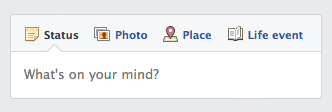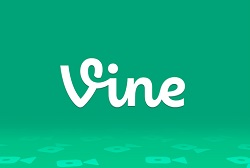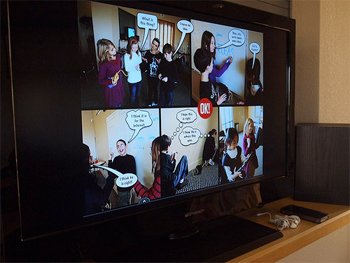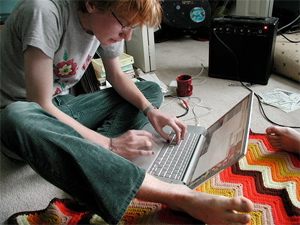
After 5 years of higher education graduating with a BA Hons from RHUL and an MA from Durham University, Chris has somehow retained an indubitable passion for education.
Now, the lead blog editor for LearnersCloud, a unique e-learning GCSE resource provider, Chris’s passion for innovative technologies has flourished and with it, a desire to share his own insights, reviews and experiences on integrating effective technologies within the classroom.

In the few decades since the birth of the web we’ve moved from email to social networking to a breadth of online services, storing more and more of our personal information in the so called ‘cloud’.
The level of data out there is growing at an exponential rate. In a typical day last year, people sent more than 144 billion emails, shared more than 684,000 pieces of content on Facebook, and uploaded over 72 hours of video footage onto YouTube every single minute.

When Twitter was first launched back in 2006, many of us were sceptical about whether it would last. What was the point of a tool that only let you send 140-character updates? Why not use Facebook which has a status function plus much more?
Many social journalists never expected it to hit the 5 million mark of users, let alone 500 million. But almost overnight Twitter became an online phenomenon. Today, over 340 million tweets are sent daily from teenagers, worldwide celebrities, small businesses and the largest conglomerates.

Interested in finding out how easy it is to use your iPad as a digital whiteboard?
As our experience and confidence in using the iPad in the education sector expands, using your iPad as a digital whiteboard may seem obvious. But whether you’re a confident Apple educator or just getting started, you might be unsure about how best to go about it.
Perhaps you want to broadcast a tutorial or e-learning resource to your students or maybe create a collaborative task that can be viewed by the whole class. I’ve trawled the app store, and reviewed some of the most highly-rated whiteboard applications and recommended our favourites. I’ve also provided a short set-up and installation guide to help you connect your iPad and project or TV.

Remember that moment when you get home from work or back from a night class and your partner’s in a bad mood? How long does it usually take you to work it out? Hours? Minutes? A few seconds?
Most of the people I ask say a few seconds, some even go as far to say that they can tell before they’ve even stepped foot in the room. However long it takes you, students are no different, they’ll make up their mind whether the lesson will be enjoyable or not within the first five minutes. This can mean the difference between an engaged learner and a disruptive one, and once an opinion has been formed it can take a lot for that to be changed.

One of the most important things for young people growing up today is the appeal of embracing change. The catch for educators in preparing students for the 21st-century workforce is how to get them to question and challenge our current understanding and practices.
In the past, what we’ve commonly referred to as the gaming disposition provides insight into this. If you consider the gaming industry − the hardcore gamers, those that play MMOGs (massively multiplayer online games) such as Final Fantasy and World of Warcraft, the surprising characteristic is that these individuals are almost exclusively bottom-line oriented. They want to be measured; they want to know how their abilities rate against others.

What if traditional methods of classroom teaching and ‘homework’ were switched?
Teaching professionals have constantly looked at improving ways of raising learner engagement and attainment. While some have fared better than others, it is technology that has offered the greatest scope for innovation, helping the teacher to spend more time supporting students directly rather than instructing them from the front of the class.
Flipped or reversed teaching is not a new concept; it dates back to the early nineties where it was trialled in a study on Peer Instruction at Harvard University. The basis of Professor Eric Mazur’s study was to integrate computer software into the classroom in order to allow the teacher to act as a coach rather than a lecturer.

A community-driven platform for showcasing the latest innovations and voices in schools
Pioneer House
North Road
Ellesmere Port
CH65 1AD
United Kingdom